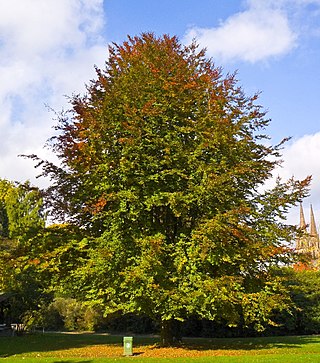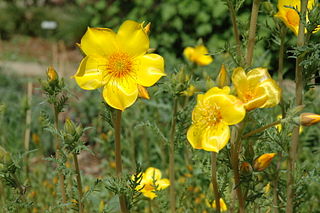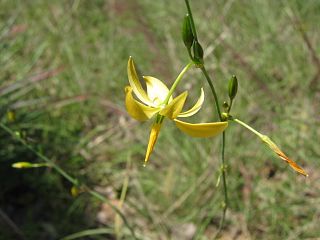
The Fagaceae are a family of flowering plants that includes beeches, chestnuts and oaks, and comprises eight genera with about 927 species. Fagaceae in temperate regions are mostly deciduous, whereas in the tropics, many species occur as evergreen trees and shrubs. They are characterized by alternate simple leaves with pinnate venation, unisexual flowers in the form of catkins, and fruit in the form of cup-like (cupule) nuts. Their leaves are often lobed, and both petioles and stipules are generally present. Their fruits lack endosperm and lie in a scaly or spiny husk that may or may not enclose the entire nut, which may consist of one to seven seeds. In the oaks, genus Quercus, the fruit is a non-valved nut called an acorn. The husk of the acorn in most oaks only forms a cup in which the nut sits. Other members of the family have fully enclosed nuts. Fagaceae is one of the most ecologically important woody plant families in the Northern Hemisphere, as oaks form the backbone of temperate forest in North America, Europe, and Asia, and are one of the most significant sources of wildlife food.

Guava is a common tropical fruit cultivated in many tropical and subtropical regions. The common guava Psidium guajava is a small tree in the myrtle family (Myrtaceae), native to Mexico, Central America, the Caribbean and northern South America. The name guava is also given to some other species in the genus Psidium such as strawberry guava and to the pineapple guava, Feijoa sellowiana. In 2019, 55 million tonnes of guavas were produced worldwide, led by India with 45% of the total. Botanically, guavas are berries.

Leptospermum is a genus of shrubs and small trees in the myrtle family Myrtaceae commonly known as tea trees, although this name is sometimes also used for some species of Melaleuca. Most species are endemic to Australia, with the greatest diversity in the south of the continent, but some are native to other parts of the world, including New Zealand and Southeast Asia. Leptospermums all have five conspicuous petals and five groups of stamens which alternate with the petals. There is a single style in the centre of the flower and the fruit is a woody capsule.

Lactarius is a genus of mushroom-producing, ectomycorrhizal fungi, containing several edible species. The species of the genus, commonly known as milk-caps, are characterized by the milky fluid ("latex") they exude when cut or damaged. Like the closely related genus Russula, their flesh has a distinctive brittle consistency. It is a large genus with over 500 known species, mainly distributed in the Northern hemisphere. Recently, the genus Lactifluus has been separated from Lactarius based on molecular phylogenetic evidence.

Ricinodendron is a plant genus in the family Euphorbiaceae first described as a genus in 1864. It includes only one known species, Ricinodendron heudelotii, native to tropical Africa from Senegal + Liberia east to Sudan and Tanzania and south to Mozambique and Angola. It produces an economically important oilseed. The tree is known as munguella (Angola), njangsa (Cameroon), bofeko (Zaire), wama (Ghana), okhuen (Nigeria), kishongo (Uganda), akpi, djansang, essang, ezezang and njasang. Two varieties of the tree species are recognized R. heudelotii var. heudelotii in Ghana and R. heudelotii var. africanum in Nigeria and westwards.

Persea schiedeana, the coyo, is an endangered, evergreen tree in the laurel family (Lauraceae), native to tropical forests of southern Mexico and Central America. Its edible fruit resembles that of the avocado, a related tree in the genus Persea. Other common names include aguacate de montaña, aguacatón, chinini, and yas.

Hovea is a genus of about forty species of flowering plants in the family Fabaceae, and is endemic to Australia. Plants in this genus are sub-shrubs, shrubs or small trees with simple leaves and purple, blue or mauve flowers with a white centre. The fruit is a pod containing brown to blackish seeds. Species of Hovea occur in all Australian states, the Australian Capital Territory and the Northern Territory.

Mentzelia is a genus of about 60-70 species of flowering plants in the family Loasaceae, native to the Americas. The genus comprises annual, biennial, and perennial herbaceous plants and a few shrubs.

Goodia is a genus of six species of flowering plants in the family Fabaceae, and is endemic to Australia. Plants in the genus Goodia are shrubs with trifoliate leaves. The flowers are arranged in racemes, the sepals with two "lips", the standard petal more or less circular and the fruit is a flattened pod.

Hedyosmum mexicanum is a species of plant in the family Chloranthaceae. It is found in Guatemala and Mexico. It is threatened by habitat loss.

Citharexylum is a genus of flowering plants in the verbena family, Verbenaceae. It contains shrub and tree species commonly known as fiddlewoods or zitherwoods. They are native to the Americas, ranging from southern Florida and Texas in the United States to Argentina. The highest diversity occurs in Mexico and the Andes. The generic name is derived from the Greek words κιθάρα (kithara), meaning "lyre", and ξύλον (xylon), meaning "wood," referring to the use of the wood in the sounding boards of string instruments. Several species, especially C. caudatum and C. spinosum, are cultivated as ornamentals.
- Citharexylum affineD.Don - from northern Mexico to Nicaragua
- Citharexylum alainiiMoldenke - Dominican Republic
- Citharexylum albicauleTurcz. - Cuba
- Citharexylum altamiranumGreenm. - northeastern Mexico
- Citharexylum andinumMoldenke - Bolivia, Jujuy Province of Argentina
- Citharexylum argutedentatumMoldenke - Peru
- Citharexylum berlandieriB.L. Rob. - from Texas to Oaxaca - Berlandier's fiddlewood, Tamaulipan fiddlewood
- Citharexylum bourgeauanumGreenm. - Veracruz, Oaxaca
- Citharexylum brachyanthum(A.Gray ex Hemsl.) A.Gray - Texas, Coahuila, Nuevo León - Boxthorn fiddlewood, Mexican fiddlewood
- Citharexylum bullatumMoldenke - Colombia
- Citharexylum calvumMoldenke - Quintana Roo
- Citharexylum caudatumL. - southern Mexico, West Indies, Central America, Colombia, Peru - Juniper berry
- Citharexylum chartaceumMoldenke - Peru, Ecuador
- Citharexylum cooperiStandl. - Costa Rica, Panama, Guatemala
- Citharexylum costaricenseMoldenke - Costa Rica, Nicaragua, Honduras
- Citharexylum crassifoliumGreenm - Chiapas, Belize, Guatemala, Honduras
- Citharexylum daniraeLeón de la Luz & F.Chiang - Revillagigedo Islands of Baja California
- Citharexylum decorumMoldenke - Colombia, Venezuela
- Citharexylum dentatumD.Don - Peru
- Citharexylum discolorTurcz. - Cuba, Hispaniola
- Citharexylum donnell-smithiiGreenm. - Oaxaca, Chiapas, Central America
- Citharexylum dryanderaeMoldenke - Colombia, Venezuela, Peru, Ecuador
- Citharexylum ekmaniiMoldenke - Cuba
- Citharexylum ellipticumMoc. & Sessé ex D.Don - Veracruz, Campeche, Tabasco; naturalized in Cuba + Cayman Islands
- Citharexylum endlichiiMoldenke - northeastern Mexico
- Citharexylum flabellifoliumS.Watson - Sonora, Baja California
- Citharexylum flexuosum(Ruiz & Pav.) D.Don - Bolivia, Peru
- Citharexylum fulgidumMoldenke - Veracruz, northeastern Mexico
- Citharexylum gentryiMoldenke - Ecuador
- Citharexylum glabrum(S.Watson) Greenm - Oaxaca
- Citharexylum glazioviiMoldenke - eastern Brazil
- Citharexylum grandiflorumAymard & Rueda - Ecuador
- Citharexylum guatemalense(Moldenke) D.N.Gibson - Guatemala, Nicaragua
- Citharexylum herreraeMansf. - Peru
- Citharexylum hexangulareGreenm. - from northern Mexico to Costa Rica
- Citharexylum hidalgenseMoldenke - Mexico
- Citharexylum hintoniiMoldenke - México State
- Citharexylum hirtellumStandl. - from Veracruz to Panama
- Citharexylum ilicifoliumKunth - Bolivia, Peru, Ecuador
- Citharexylum iltisiiMoldenke - Peru
- Citharexylum × jamaicenseMoldenke - Jamaica, Haiti, Puerto Rico (C. caudatum × C. spinosum)
- Citharexylum joergensenii(Lillo) Moldenke - Argentina, Bolivia
- Citharexylum karsteniiMoldenke - Colombia, Venezuela
- Citharexylum kerberiGreenm. - Veracruz
- Citharexylum kobuskianumMoldenke - Peru
- Citharexylum krukoviiMoldenke - eastern Brazil
- Citharexylum kunthianumMoldenke - Colombia, Venezuela, Ecuador
- Citharexylum laetumHiern - southern Brazil
- Citharexylum laurifoliumHayek - Bolivia, Peru
- Citharexylum lemsiiMoldenke - Guanacaste Province in Costa Rica
- Citharexylum × leonisMoldenke - Cuba (C. caudatum × C. tristachyum)
- Citharexylum ligustrifolium(Thur. ex Decne.) Van Houtte - Mexico
- Citharexylum lojenseMoldenke - Ecuador
- Citharexylum lucidumCham. & Schltdl. - Mexico
- Citharexylum lycioidesD.Don - Mexico
- Citharexylum macradeniumGreenm. - Panama, Costa Rica
- Citharexylum macrochlamysPittier - Panama, Colombia
- Citharexylum macrophyllumPoir. - Colombia, Venezuela, Ecuador, Guianas, northwestern Brazil
- Citharexylum matheanumBorhidi & Kereszty - Cuba
- Citharexylum matudaeMoldenke - Chiapas
- Citharexylum mexicanumMoldenke - Veracruz, Puebla, Oaxaca
- Citharexylum microphyllum(DC.) O.E.Schulz - Hisipaniola
- Citharexylum mirifoliumMoldenke - Colombia, Venezuela
- Citharexylum mocinoiD.Don - Mexico, Central America
- Citharexylum montanumMoldenke - Colombia, Ecuador
- Citharexylum montevidense(Spreng.) Moldenke - Brazil, Argentina, Paraguay, Uruguay
- Citharexylum myrianthumCham. - Brazil, Argentina, Paraguay
- Citharexylum obtusifoliumKuhlm - Espírito Santo
- Citharexylum oleinum Moldenke - Mexico
- Citharexylum ovatifoliumGreenm. - Mexico
- Citharexylum pachyphyllumMoldenke - Peru
- Citharexylum pernambucenseMoldenke - eastern Brazil
- Citharexylum poeppigiiWalp. - Colombia, Venezuela, Ecuador, Bolivia, Peru, Brazil
- Citharexylum punctatumGreenm. - Bolivia, Peru
- Citharexylum quercifoliumHayek - Peru
- Citharexylum quitenseSpreng. - Ecuador
- Citharexylum racemosumSessé & Moc. - Mexico
- Citharexylum reticulatumKunth - Ecuador, Peru
- Citharexylum rigidum(Briq.) Moldenke - Paraguay, southern Brazil
- Citharexylum rimbachiiMoldenke - Ecuador
- Citharexylum roseiGreenm. - Mexico
- Citharexylum roxanaeMoldenke - Baja California
- Citharexylum scabrumMoc. & Sessé ex D.Don - northern Mexico
- Citharexylum schottiiGreenm. - southern Mexico, Central America
- Citharexylum schulziiUrb. & Ekman - Hispaniola
- Citharexylum sessaeiD.Don - Mexico
- Citharexylum shreveiMoldenke - Sonora
- Citharexylum solanaceumCham. - southern Brazil
- Citharexylum spinosumL. – Spiny fiddlewood - West Indies, Panama, Venezuela, the Guianas; naturalized in India, Mozambique, Fiji, Bermuda
- Citharexylum stenophyllumUrb. & Ekman - Haiti
- Citharexylum steyermarkiiMoldenke - Veracruz, Chiapas, Guatemala
- Citharexylum suberosumLoes. ex Moldenke - Cuba
- Citharexylum subflavescensS.F.Blake - Colombia, Venezuela, Ecuador, Peru
- Citharexylum subthyrsoideumPittier - Colombia, Venezuela
- Citharexylum subtruncatumMoldenke - northwestern Brazil
- Citharexylum sulcatumMoldenke - Colombia
- Citharexylum svensoniiMoldenke - Ecuador
- Citharexylum teclenseStandl. - El Salvador
- Citharexylum ternatumMoldenke - Cuba
- Citharexylum tetramerumBrandegee - Valle de Tehuacán-Cuicatlán in Mexico
- Citharexylum tristachyumTurcz. – Threespike Fiddlewood - Cuba, Jamaica, Leeward Islands
- Citharexylum uleiMoldenke - Colombia, Peru, northwestern Brazil
- Citharexylum vallenseMoldenke - Colombia
- Citharexylum venezuelenseMoldenke - Venezuela
- Citharexylum weberbaueriHayek - Peru

Apodytes is a genus of flowering plants in the family Metteniusaceae. It was formerly either unplaced as to family or placed in the family Icacinaceae. It consists of about 8 species of evergreen trees, from tropical northeastern Australia, New Caledonia, Africa and Asia. The exact number of species has been revised from 3 to 8, according to The Plant List.

Echeandia is a genus of New World plants in the century plant subfamily within the asparagus family.

Metteniusaceae are a family of flowering plants, the only family in the order Metteniusales. It consists of about 10 genera and 50 species of trees, shrubs, and lianas, primarily of the tropics. The family was formerly restricted to just Metteniusa, but it is now expanded with a number of genera that were formerly placed in the widely polyphyletic Icacinaceae.

Emmotum is a genus of flowering plants in the family Metteniusaceae. It was formerly placed in the family Icacinaceae. It has about 13 species. One of these species, E. harleyi, was described in 2007.

Leptospermum polygalifolium, commonly known as tantoon, jellybush or yellow tea tree, is a species of shrub or tree of the family Myrtaceae that is endemic to eastern Australia, including Lord Howe Island. It has thin bark, elliptical leaves, white flowers arranged singly on short side shoots and fruit that remain on the plant for a few years.

Rhaphiostylis beninensis is a woody, sprawling or scrambling glabrous, evergreen shrub or liane native to Tropical Africa, belonging to the family Metteniusaceae, and one of 3 species in the genus Rhaphiostylis. It is traditionally used as an anti-inflammatory by the Bantu people of Africa.

The Sierra Madre de Chiapas moist forests is a tropical moist broadleaf forest ecoregion in southern Mexico and southern Guatemala, extending into the northwestern corner of El Salvador.
Strephonema pseudocola is a species of flowering plant in the family Combretaceae. It is a tree found in the forests of tropical West Africa. It was first described from the Ivory Coast.
Chrysophyllum mexicanum is a plant in the family Sapotaceae, native to Mexico and Central America.


















